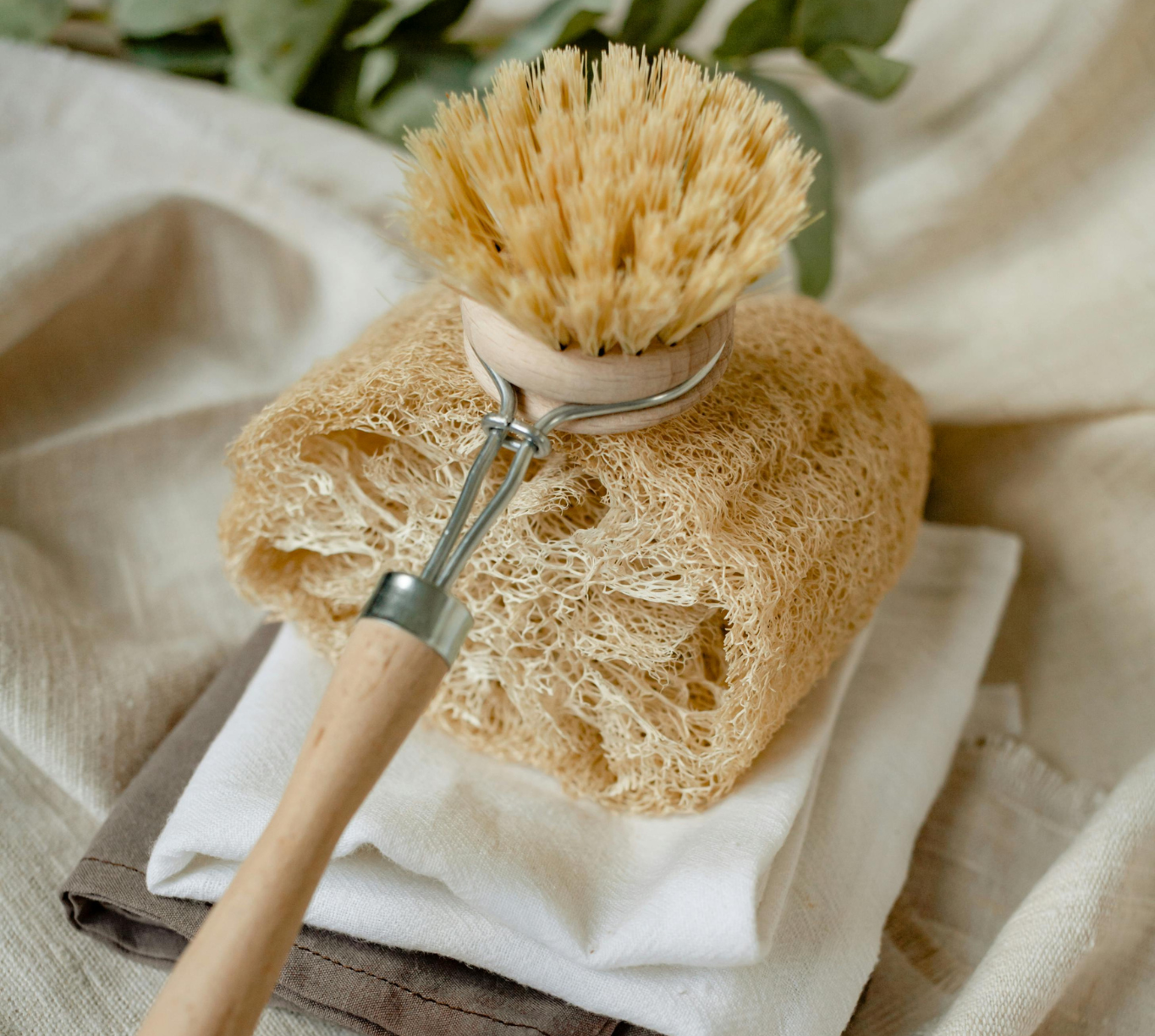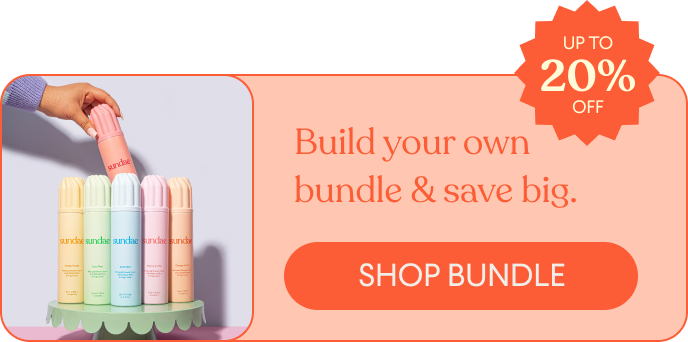Washcloth, Sponge, Loofah, or Hands? What is The Right Way to Wash Your Body?

Sadly, Skin School is not a thing for everyday Aussies (unless you’re applying for a cosmetology degree. Obvs). Luckily, Sundae School is, and today we’re getting into the nitty-gritty of how to actually wash our bodies. From bath sponges to washcloths to loofahs – is there even one right way? Not necessarily – it’s up to your skin type and personal preference, and all have their pros and cons to consider. Let’s dive in.
Washcloths
One of the most common and popular cleansing tools, washcloths act as a barrier between your hand and skin and are a good option if you’re looking for a cost-effective and more sustainable option – as they can be chucked in the washing machine. However, experts suggest using a new washcloth each time you shower to keep things hygienic. It’s also a good idea to select the softest fabric possible to avoid damaging your skin moisture barrier. Something like cotton will do the trick!
Loofahs
While some people are anti-loofah for its bacteria-breeding potential, there are some advantages to them, too, and when washed correctly, they can be a good addition to your bodycare routine. Loofahs are rough, spongy, and fibrous, making them popular for exfoliating, improving circulation and removing dead skin cells. However, using a loofah more than twice a week can damage your skin's moisture barrier or cause redness, especially for those with sensitive skin or conditions like eczema or psoriasis.
Related: The Benefits of Dry Brushing: An Ancient Technique for Modern Times
To avoid irritation or infection, keep your loofah clean, as loofahs can breed bacteria if left in a moist environment (where it’s hard for them to fully dry in between showers). To avoid this, you should place your loofah in a dry, well-ventilated area after use and replace it every few weeks to maintain A+ hygiene.
Net Sponges
Net sponges, used in Africa for centuries, are nylon washcloths similar to loofahs in texture and function. They offer the same exfoliation benefits but dry more quickly, making them more hygienic. However, using net sponges too harshly can disrupt the skin moisture barrier, causing issues like eczema, redness, and irritation. Another upside is that net sponges are more durable than loofahs, lasting one to two years with gentle washing.
Hands
Ah, our fave – washing with hands! Not only is it gentle on the skin and prevents skin moisture barrier disruption, but it’s also super convenient and more cost-effective than the rest. However, if you’re looking for exfoliation, you can use a bathing mitt, or get your hands on our Green Tea and Berry Exfoliating Whipped Shower Foams.
So, as you can see, it’s not all about bath sponge vs loofah vs hands, etc. Of course, it all comes down to your personal preference, budget and skin type. So, as always, let your skin guide the way, and just do what feels right for your bod!
Happy Sundae x
Have you tried all our whipped, creamy scents yet?? 👇
Pomegranate Shower Foam | Coconut Shower Foam | Vanilla Shower Foam
Written By: Lizzie Waley (Sundae Co-Founder & Body Care Enthusiast) | LinkedIn
Fact Checked: Charnnie Frimpong (Sundae Content Marketing Manager) | Linkedin

